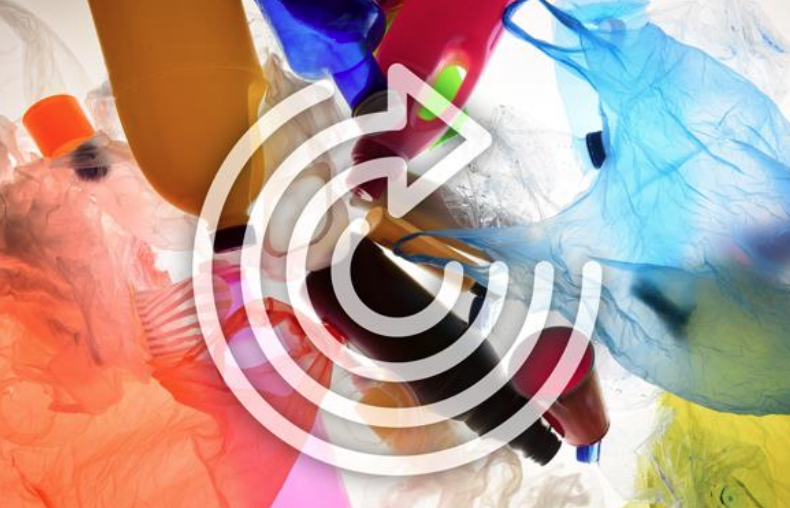Chemical Recycling: The Strategic Battleground for the Future of Plastics circularity
The petrochemical and plastics industries are standing at a pivotal moment. Chemical recycling - once a niche concept - is now a strategic battleground where innovation, regulation, and market pressure collide. For industry experts, this isn’t just about sustainability. It’s about competitiveness, resilience, and long-term relevance.
As global demand shifts toward circular materials and low-carbon solutions, the rules of engagement are changing fast. Startups are entering with modular systems and AI-driven platforms, while legacy players face mounting pressure to modernize. Technologies like enzymatic depolymerization and blockchain-enabled traceability are no longer experimental, they’re becoming essential.
This article offers a candid look at how companies are responding to the chemical recycling revolution, It is a review and a responding to Driving Sustainable Innovation: Growth Opportunities in Lithium-Ion Battery Materials, Architectural Coatings, and Chemical Recycling by Growth Opportunities a Frost & Sullivan Newsletter on LinkedIn. Through real-world case studies, highlight how leading, why lagging, and what it takes to stay ahead in a market that’s being redefined from the ground up.
Adding to the urgency is the evolving regulatory landscape, especially in Europe. The EU Commission is finalizing a mass balance accounting framework for chemical recycling under the Single Use Plastics Directive (SUPD). This new approach excludes fuel-use materials from recycled content targets and introduces stricter rules for tracking, verifying, and attributing recycled inputs. It’s a move designed to boost investor confidence, standardize reporting, and ensure that recycled content claims are both credible and traceable.
For companies operating in or supplying to European markets, this regulation is a game-changer. It will influence feedstock economics, investment decisions, and competitive positioning across packaging, automotive, and consumer goods sectors.
If you're in the business of plastics or petrochemicals, this is more than a trend, it’s a wake-up call.
Transformative Megatrends
Frost & Sullivan says: Transformative Megatrends: The transition toward low-carbon, sustainable feedstocks is creating new opportunities for recyclers to develop flexible systems that process both fossil and bio-based plastics at scale. And Global restrictions on single-use plastics and extended producer responsibility (EPR) frameworks are driving rapid investment in chemical recycling systems that can manage complex or contaminated waste.
Here is a case study about How Leading a transformation trend: Neste & Borealis Neste , Borealis, Uponor, and Wastewise collaborated to recycle hard-to-process PEX plastic waste into high-quality pipes (Neste, Borealis, Uponor, and Wastewise - A case study in chemical recycling from Plastics Europe)
This initiative directly responds to megatrends like the shift to low-carbon feedstocks and regulatory pressure on single-use plastics. Their system integrates pyrolysis, refining, and polymerization, showing how aligned strategy can turn waste into value.
Here is an example to watch about lagging: ExxonMobil Despite public commitments, ExxonMobil’s chemical recycling facility in Baytown processed only 7% of its promised capacity over three years (A new report casts doubt on industry narratives about the “revolutionary” technology.)
Internal documents revealed doubts about scalability and economic feasibility, showing a disconnect between public messaging and actual readiness to meet sustainability megatrends.
Disruptive Technologies
Frost & Sullivan says: Enzymatic depolymerization is unlocking low-temperature, highly efficient recycling for materials like polyethylene terephthalate (PET), enabling higher recovery rates and opening new commercial applications.
Here is a case study about How Leading a Disruptive Technologies: CARBIOS (France) CARBIOS is leading the charge in enzymatic depolymerization, a process that uses engineered enzymes to break down PET plastics into their original monomers under mild conditions. Unlike mechanical recycling, which degrades plastic quality, Carbios’ method allows for infinite recycling without loss of performance. Their pilot plant has successfully produced food-grade PET bottles from enzymatically recycled textile waste (Using Enzymes to Convert Linear Waste Streams into Circular Supply Chains)
In partnership with Indorama Ventures, Carbios is building a full-scale facility capable of recycling 50,000 tonnes of PET annually, set to be operational by 2025
Here is an example to watch about lagging: Broader Industry Hesitation Despite the promise of enzymatic recycling, many large chemical and packaging firms remain slow to adopt it. A 2025 review by Leipzig University highlights that while enzymatic PET recycling is scalable and environmentally superior, most companies still rely on mechanical or high-temperature chemical methods (Biocatalytic recycling of plastics: facts and fiction by: Royal society of Chemistry)
These traditional approaches are energy-intensive and yield lower-quality outputs. The hesitation stems from concerns about cost, scalability, and enzyme robustness—issues that innovators like Carbios and Samsara Eco are actively solving (In-Situ Product Removal for the Enzymatic Depolymerization of Poly(ethylene terephthalate) via a Membrane Reactor)
Industry Convergence
Frost & Sullivan says: Industries such as automotive, electronics, and consumer goods are joining forces with recyclers to build shared collection and processing networks that improve feedstock consistency and ensure supply.
Here is a case study about How Leading an Industry Convergence: Honda & Mitsubishi Chemical – Recycled Acrylic Resin Collaboration Honda and Mitsubishi Chemical pioneered the use of recycled acrylic resin in automotive design, specifically for the N-ONE e: Door Visors (Plastic Recycling – Honda and Mitsubishi Chemical Pioneer Recycled Acrylic Resin for N-ONE e by Polyestertime)
This collaboration marked a world-first breakthrough, integrating chemical recycling into automotive components. The project overcame the challenge of recycling acrylic, a notoriously difficult material—by developing a shared processing network that included chemical recyclers, automotive engineers, and material scientists. This kind of cross-industry partnership not only improved feedstock consistency but also demonstrated how disruptive technologies can be scaled for real-world applications.
Here is an example to watch about lagging: Fragmented Efforts in ELV Plastics Recycling Despite growing demand, many automotive manufacturers still struggle to recycle plastics from end-of-life vehicles (ELVs). A 2025 report highlights that contamination, inconsistent sorting, and lack of collaboration across the value chain lead to most ELV plastics being incinerated or landfilled (Challenges and Realities of Automotive Plastic Recycling by Plasticsengineering)
While initiatives like the Global Impact Coalition’s pilot project are promising (A Global Impact Coalition initiative set to revolutionize automotive plastics recycling) (BASF ,Covestro , LG Chem, LyondellBasell, Mitsubishi Chemical Group, SABIC , SUEZ , and Syensqo: 8 top companies are joining forces to turn it around), the broader industry has yet to fully commit to shared infrastructure and standardized processes. This fragmentation undermines the potential of disruptive technologies and slows progress toward circularity.
Compression of Value Chains
Frost & Sullivan says:Direct collaboration with manufacturers is enabling closed-loop systems where recyclability is embedded in the design phase, increasing circularity and long-term product value.
Here is a case study about How Leading a Compression of Value chain: Neste Neste’s approach compresses the value chain by integrating waste liquefaction, refining, and polymer production within one ecosystem (Developing chemical recycling with value chain partners by Cefic)
This reduces reliance on external suppliers and embeds recyclability from the design phase.
Here is an example to watch about lagging: Hesitant Producers Companies that delay investment in integrated recycling systems are failing to compress their value chains, resulting in fragmented operations and higher costs (Chemical Recycling: Plastics Firms Must Move Now or Miss Out by Bain & Company)
Innovative Business Models
Frost & Sullivan says: Advanced AI and machine vision technologies are driving smarter, faster sorting processes that improve output quality, lower costs, and support operational scalability.
Here is a case study about How Leading an Innovative Business Model: LanzaTech – India Glycols Limited – Unilever This trio developed a model that captures carbon emissions and converts them into consumer products. (the world’s first dishwashing liquid made from recycled carbon emissions instead of from fossil-fuels) It’s a powerful example of how circularity and innovation can coexist, creating value while reducing environmental impact: LanzaTech captures carbon emissions from steel mills and converts them into ethanol using proprietary biotechnology. India Glycols Limited transforms that ethanol into ethylene oxide, a key ingredient in surfactants. Unilever then formulates these surfactants into consumer products like OMO laundry capsules and Sunlight dishwashing liquid.
Here is an example to watch about lagging: Brightmark Energy – Indiana Chemical Recycling Facility plastics-to-fuel plant in Ashley, Indiana was once hailed as a breakthrough in chemical recycling. However, the project has become a cautionary tale of overpromising and underdelivering ( Chemical Recycling: A Dangerous Deception) Despite receiving millions in public subsidies, the facility operated far below capacity and failed to meet its recycling targets. The company filed for bankruptcy in early 2025, citing financial strain and technical challenges. Investigations revealed that the plant produced more hazardous waste than usable recycled material, and much of the output was burned as fuel, contradicting the principles of circularity.
This case underscores the risks of treating chemical recycling as a PR strategy rather than a robust business model. It also highlights the importance of transparency, scalability, and environmental accountability in circular innovation.
Competitive Intensity
Frost & Sullivan says: Innovative start-ups are challenging legacy models with modular systems, digital traceability, and novel recycling techniques that accelerate adoption and reshape industry standards.
Here is a case study about How Leading a Competitive Intensity: Terrawaste, DePoly, and Pryme
Startups like Terrawaste, DePoly, and Pryme are emerging as serious contenders in the chemical recycling space, challenging legacy firms with nimble operations and breakthrough technologies:
- TerraWaste (Netherlands) developed HTLOOP, a hydrothermal liquefaction process that converts mixed and wet waste—including plastics and organic household waste—into bio-crude oil, biochar, and high-value chemicals. The system operates in a sealed, emission-free environment and reuses heat and water, offering a low-energy, modular solution for urban waste management
- DePoly (Switzerland) focuses on PET chemical recycling using a low-energy depolymerization process that works at room temperature and doesn’t require pre-sorting or cleaning. Their method breaks down PET into its original monomers, which can be reused to produce virgin-quality plastic
- Pryme (Netherlands) uses a proprietary pyrolysis technology to convert plastic waste into valuable hydrocarbons. Their scalable, low-carbon process is designed for industrial integration and aims to process tens of thousands of tons annually
These startups are not just innovating—they’re executing. Their ability to scale quickly, form strategic partnerships, and adapt to regulatory shifts is reshaping industry standards and putting pressure on incumbents.
Here is an example to watch about lagging: Agilyx & AmSty (Regenyx Facility) Legacy firms like Agilyx and Americas Styrenics (AmSty) have struggled to deliver on the promise of chemical recycling.
- Their joint venture, Regenyx, aimed to convert polystyrene waste into reusable styrene feedstock using pyrolysis. Despite operating for over a decade, the facility processed only 4,400 tons of waste, far below its projected capacity
- The plant was recently shut down, having sustained over $22 million in operating losses. Regulators classified it as a “large quantity generator” of hazardous waste, and most of its output was incinerated rather than recycled
- This failure reflects broader industry challenges: high costs, technical complexity, and environmental risks. It also exposes the gap between marketing claims and operational reality, a gap that nimble startups are increasingly exploiting.
Internal Challenges
Save Plastics Despite being a small company, Save Plastics has built a local circular economy by processing low-quality mixed plastics into durable public infrastructure. (Good practice of circular economy business models) Their commitment to workforce development and local sourcing shows how internal alignment can drive impact.
Broader Talent Gaps The chemical recycling sector faces a shortage of skilled professionals in AI, automation, and regulatory compliance. ( Chemical Recycling: Plastics Firms Must Move Now or Miss Out by Bain & Company) Companies that fail to invest in talent risk falling behind in execution and innovation.







